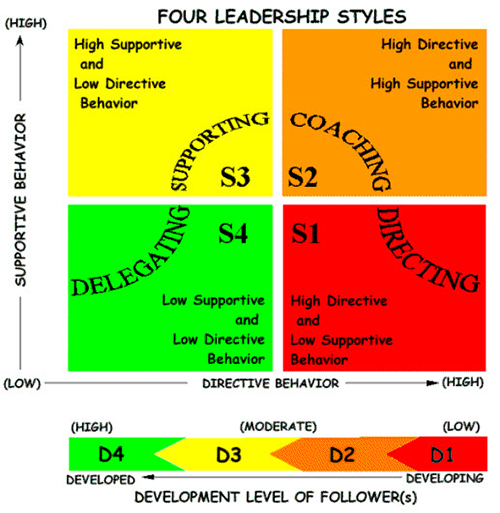
Towards the end of the movie The Dark Knight, Commissioner Gordon and Batman reflect on their final encounter with Harvey Dent. Gordon shares his concerns that if Gotham ever discovered that Dent had changed from being a good guy to a villain, it would undo the good that Dent had accomplished for the citizens of the city. Batman tells Gordon to stop whining. The people of Gotham need to know about Dent and his crimes. The city sinks into chaos. Fade to black.
No, this is not how the movie ended. While this alternative ending may have been just as entertaining, it never happened.
In that moment when Gordon reveals his fear of losing Dent’s heroic legacy, Batman makes a decision to ensure that would never happen. Accepting blame for all of Dent’s actions, Batman wants Dent to be remembered as a hero in the minds of the people. Even though he is not the villain, as Gordon reminds him, Batman states “I’m whatever Gotham needs me to be.”
This scene is situational leadership in action. The critical nature of the task, the potential impact to the people, and the willingness of Commissioner Gordon to commit himself to the mission all depended upon our hero’s ability to adjust his leadership style to reflect the situation at hand.
The Situational Leadership theory, developed in the 1960s by the late Dr. Paul Hersey and Dr. Ken Blanchard, proposes that the most effective and successful leaders are able to adjust their leadership styles to fit a specific situation. Why would a leader need to do this? A leader MUST be able to do this because the variables of a situation can, and often do, change. Let’s take a closer look at these variables and how changes that impact these variables create unique situations that must be handled with a flexible approach to leadership.
- People – Who are they? What are their skills and level of expertise (competence)? What is their confidence level and level of commitment (maturity?)
- Task – What is its nature? Is it simple or complex? Are the processes that support this task brand new or well known?
- Environment – Is there stability or is the organization in a state of flux? Does the culture promote conservative behavior or does it encourage the people to take risks?
There is no single leadership style that can efficiently handle the wide variety of situations that can arise within the workplace. Effective leaders assess each situation and adjust their leadership approach based on the maturity and competence level of the people, as well as details about the tasks and environment.

According to Dr. Hersey and Dr. Blanchard, there are four primary leadership styles that can be utilized to manage the fulfillment of tasks. There are also four levels of maturity that people possess as they strive to fulfill (or avoid) these tasks. The Hersey-Blanchard model is a common sense approach to matching a leadership style to the appropriate maturity level of the people based on the desired task.
If a person/team does not really know what to do to complete a task and does not exhibit the initiative or willingness to perform the task, this person/team has a low maturity level (M1.) The appropriate leadership style needed to ensure that these individuals complete their tasks is highly structured, controlled, and managed. This Directing leadership style (S1) creates a relationship characterized by one-way communication from the leader to the person and a focus on tasks where specific instructions are supplied and controls set up to ensure that the task is completed.
A person/team that is highly motivated but still lacks skills to perform the task successfully (M2) is best paired with the Coaching leadership style (S2.) The leader still provides direction and guidance but there is now two-way communication and feedback. There is still a strong focus on the task but the leader also focuses on the person fulfilling the task. A person who has all the skills needed to perform the task but does not have the willingness or motivation to complete it (M3) will have greater chance of succeeding if paired with the Supportive leadership style (S3.) While there is still focus on the task, it is not as great as the focus on the person. Why does this highly skilled person lack the motivation to complete this task?

If a person or team is highly competent with a specific task, has great confidence and shows a strong willingness to perform the task, this person/team has the highest maturity level (M4.) How effective would the Directing leadership style be with this type of person? Not very effective at all! While the task might still be completed, the leader will waste time actively providing detailed instructions and management when it was not required for success. The appropriate leadership style is Delegation (S4), one that empowers the person/team to have responsibility for making day to day decisions. The leader is still involved and will be informed of progress but he or she is less involved with actively making sure the task is competed. The leader is now free to focus on other tasks and people who have a greater need for direction.
While you may not put on a mask and cape and fight crime in your spare time, you are still faced with the same types of leadership challenges. By accurately assessing a situation – the tasks, the people, and the environment – you will have the flexibility to choose the appropriate leadership style and be whatever your team needs you to be.


Great reminder that leadership is not one-dimensional! Leading situational also builds trust with employees. Too many times a leaders does not properly assess and diagnose the employee’s ability and willingness. When this happened the employee feels abandoned or micro managed thus destroying trust.